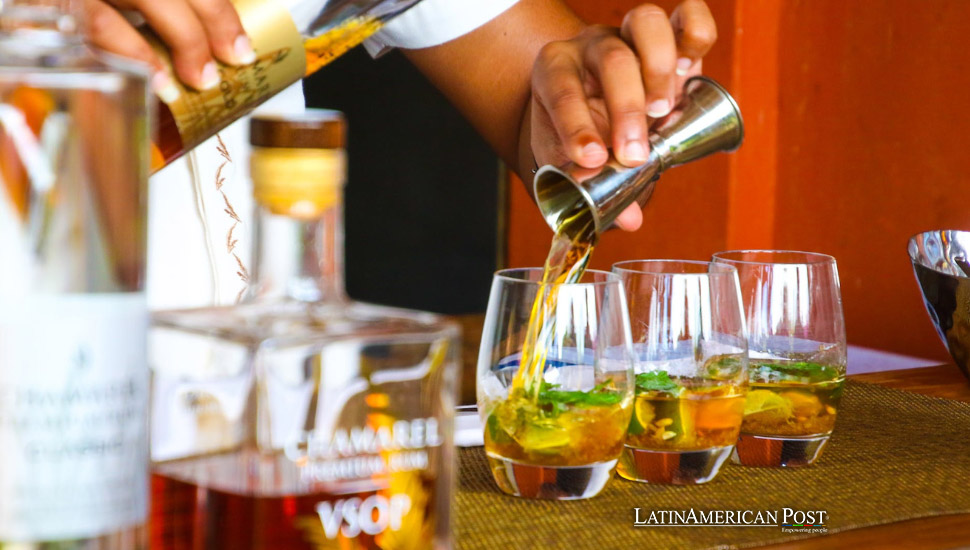Battleground Barbancourt Liquor: Gang Warfare Threatens Haiti’s Rum Industry

In the heart of Haiti’s capital, Port-au-Prince, amidst escalating gang violence, the iconic Rhum Barbancourt distillery faces a grim reality: its sugarcane fields ablaze, casualties of a turf war gripping the Caribbean nation.
Turbulent Times for Haiti’s Rum Industry
As the sun rises over Port-au-Prince, the streets buzz with an uneasy tension, a backdrop to the unfolding saga threatening Haiti’s most cherished export: rum. The latest casualty in the escalating battle for control among violent gangs, the sugarcane fields surrounding the famed Rhum Barbancourt distillery lie charred, casualties of ruthless conflict. In a nation plagued by socio-political turmoil, where cries for justice merge with the cacophony of gunfire, the fate of Haiti’s rum industry hangs in the balance.
The skirmishes, reminiscent of battlefield chaos, have engulfed the region, leaving devastation in their wake. At least eight hectares of fertile land, akin to 19.8 acres, succumbed to the flames recently, a grim testament to the ruthless pursuit of power. Rival factions, their identities shrouded in shadow, vie for dominance, each blazes a beacon of their brazen intent.
For Barbancourt, a bastion of Haitian heritage, the inferno poses a dire threat. Rum, crafted from the very sugarcane that now lies smoldering, symbolizes more than a beverage; it embodies a nation’s spirit. Yet, amidst the chaos, hope flickers dimly. Company officials assure the public that while acres may burn, the spirit endures; production remains unscathed.
However, the toll extends beyond charred fields and lost revenue. The company’s philanthropic arm, a beacon of hope in a sea of despair, braces for impact. Temporarily halting vital services—from potable water distribution to medical care—the foundation redirects its efforts, a poignant reminder of the human cost of conflict.
Haiti at the Crossroads of Collapse
Haiti, once a beacon of resilience, now reels under the weight of its tribulations. The United Nations grim tally speaks volumes: over 800 souls lost or scarred in January alone, a staggering escalation from years past. Amidst the chaos, a chilling revelation emerges the relentless violence, a grim crescendo of brutality, hints at an unsettling reality. Fresh ammunition fuels the fire, igniting passions and perpetuating the cycle of bloodshed.
Yet, amidst the turmoil, another storm brews. Prime Minister Ariel Henry’s embattled leadership faces mounting scrutiny, his nation torn between dissent and despair. Violent demonstrations, a symphony of unrest, echo through the streets, claiming lives in their wake. Amidst the chaos, a grim truth emerges: Haiti, a nation at the crossroads, teeters on the brink of collapse.
International Urgency as Haiti’s Plight Echoes Globally
As the world watches, Haiti’s plight reverberates beyond its shores. Every gunshot, every cry for help, echoes through the halls of international diplomacy. The United Nations, a reluctant arbiter, calls for action, urging the swift deployment of peacekeepers. Yet, as bureaucracy grinds to a halt, lives hang in the balance, casualties of political inertia.
Turbulent Times for Haiti’s Rum Industry
Also read: Push for Shorter Work Week Gains Momentum in Mexico’s Ciudad Juárez
In the heart of Port-au-Prince, amidst the chaos and carnage, a nation’s spirit endures. Barbancourt, a symbol of resilience, is a testament to Haiti’s indomitable will. Yet, as the embers of conflict smolder, the future remains uncertain. In a land torn asunder by violence, hope flickers, a beacon amidst the darkness, daring to defy the odds.





